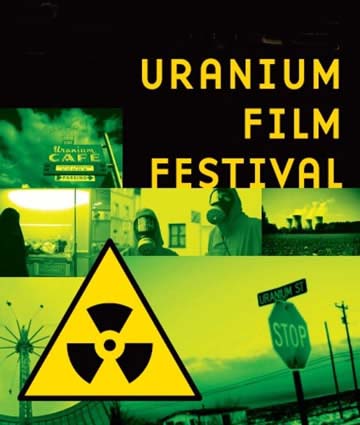Fukushima prosecutors demand TEPCO execs get 5 years for negligence that led to nuclear meltdown
December 28, 2018
Fukushima prosecutors demand TEPCO execs get 5 years for negligence that led to nuclear meltdown
Japanese prosecutors have demanded the top three executives at Tokyo Electric Power Company receive five-year prison sentences for failing to take measures to prevent the disastrous triple meltdown of the Fukushima nuclear plant.
Ex-TEPCO chairman Tsunehisa Katsumata and former vice presidents Ichiro Takekuro and Sakae Muto have all pleaded not guilty to charges of professional negligence resulting in death and injury, claiming they could not have anticipated the tsunami that triggered the catastrophic meltdown – and that even if they had implemented preventative measures, they wouldn’t have been sufficient to prevent the disaster.
All three executives were told years before the accident that a tsunami could hit the plant, triggering just the sort of catastrophe that culminated in the 2011 meltdown, the prosecution claimed. Not only did the executives not attempt any preventative measures, but they didn’t even try to gather further information about how such an event might endanger the plant.
“It was easy to safeguard the plant against tsunami, but they kept operating the plant heedlessly,” the prosecution argued. “That led to the deaths of many people.” The trio faces responsibility for the deaths of 44 people, including 13 hospital patients forced to evacuate themselves amidst the chaos.
The executives claimed they had not been informed of the tsunami risk, opting to shift blame onto their underlings, according to NHK.
While the Fukushima meltdown took place seven years ago, the prosecution has only just now delivered its sentencing recommendations in a trial that nearly did not happen. Public prosecutors twice chose not to seek indictments against the TEPCO brass, but an independent citizens’ panel pushed for a trial.
Last year, Fukushima victims won a landmark class action suit that found TEPCO officials had not adequately prepared for potential disasters. A $4.5 million payout was split among 3,800 plaintiffs.
The chain-reaction Fukushima disaster, beginning with an earthquake, leading to a tsunami and culminating in the worst meltdown since Chernobyl, is believed to have killed 19,000 people. The radiation released from that catastrophe has also begun taking its toll, with the first official radiation death tallied in September. The area surrounding Fukushima is still highly radioactive, and 30,000 people have been unable to return to their homes.
Farmers struggle to keep cows left behind near Fukushima plant

This photo taken on Aug. 18, 2018, shows cattle farmer Fumikazu Watanabe taking care of a cow on his farm in an area designated by the Japanese government as an evacuation zone in Namie, Fukushima Prefecture, near the crippled Fukushima Daiichi nuclear power plant.
December 26, 2018
FUKUSHIMA, Japan (Kyodo) — Having disregarded a state instruction to kill cattle left behind in areas near the crisis-hit Fukushima Daiichi nuclear plant, some local farmers have been struggling to keep about 430 cows within a 20-kilometers radius of the complex exposed to radiation.
The instruction was issued two months after fuel meltdowns at the plant in northeastern Japan were triggered by a massive earthquake and a tsunami on March 11, 2011, for about 3,500 cows kept within the area adjacent to the Fukushima Daiichi complex.
Regarding their cows as “family members,” some farmers ignored the instruction, while others who followed it say they still suffer psychologically. The central government allowed cattle breeding in the 20-km zone in 2012, but shipments are still banned.
Keiji Okada, a professor of veterinary science at Iwate University and a researcher of animals exposed to radiation, has been taking blood and urine samples from cows at a couple of farms in the zone to see if there are any genetic abnormalities in them.
One farmer who is cooperating with the research is Fumikazu Watanabe, a 60-year-old local cattle farmer, in the town of Namie, several kilometers from the Fukushima plant.
Watanabe said he wants to protect his 50 cows “until they die a natural death just like human parents protect their children.”
Before returning to Namie in October last year after evacuation orders for some parts of the town were lifted, Watanabe used to shuttle between the farm and his shelter, which was about 50 km away, by applying for special entry permission to take care of his cows.
Radiation levels at Watanabe’s farm stand at 15 to 20 microsieverts per hour, the highest among the seven farms where the 430 cows are kept, but his cows are “so far in perfect health,” Okada said.
“This research is internationally rare and it could be applied to protecting cattle when a nuclear disaster occurs,” he said.
Another farm dubbed “Moo Mow Garden” in the town of Okuma, where the Fukushima plant is sited, is run by Satsuki Tani, 36, who initially worked as a volunteer following the disaster. Eleven cows are still kept at the 6-hectare facility in the community that became a ghost town.
Tani, a former company worker in Tokyo, originally came to Fukushima to protect stray cows after seeing news about cattle starved to death in the disaster-hit areas. She came up with the idea of having the cows, which eat 60 kilograms of grass every day, help to manage and conserve desolate farmland.
The cows released at the farm not only ate the weeds but knocked down a 3-meter-tall scrub and ate its leaves, transforming the deserted farm into a tidy field.
“I was always depressed to see the ruined farm every time I came back for a temporary stay, but now I feel better,” said the farm’s landlady in her 70s.
Tani, who now works part-time at a convenience store to make her living, said she aims to make a business out of her farm project. “I want to maintain the farmland so residents returning to the town in the future will be able to resume farming,” she said.
On the other hand, Kaiichi Shiba, 68, who agreed to abandon his 30 cows in 2013, has regretted his decision. It was tough for him to visit the farm exposed to high levels of radiation from his shelter.
“Yasuhira, Haruka — each of them had a name. It’s like I’ve killed my family,” Shiba said of his cows. “If I could have moved them to a safer place, they would have lived.” But it was impossible because the government prohibited evacuation of the cows outside the 20-km radius to prevent their meat from being marketed.
Shiba, who has evacuated from Namie to the city of Sayama in Saitama Prefecture, about 200 km away from his hometown, said he has yet to find a new motivation in life.
Prosecutors demand 5-year prison terms for Tepco’s ex-bosses for Fukushima nuclear disaster

Prosecutors say TEPCO leaders should have known the risks a tsunami could pose to the Fukushima Dai-ichi nuclear power plant, which sits along Japan’s eastern coast. Here, the Unit 3 reactor is seen this past summer, amid storage tanks of radiation-contaminated water.
Executives In Fukushima Nuclear Disaster Deserve 5-Year Prison Terms, Prosecutors Say
December 26, 2018
The former chairman and two vice presidents of the Tokyo Electric Power Co. should spend five years in prison over the 2011 flooding and meltdown at the Fukushima Daiichi nuclear plant, Japanese prosecutors say, accusing the executives of failing to prevent a foreseeable catastrophe.
Prosecutors say the TEPCO executives didn’t do enough to protect the nuclear plant, despite being told in 2002 that the Fukushima facility was vulnerable to a tsunami. In March of 2011, it suffered meltdowns at three of its reactors, along with powerful hydrogen explosions.
“It was easy to safeguard the plant against tsunami, but they kept operating the plant heedlessly,” prosecutors said on Wednesday, according to The Asahi Shimbun. “That led to the deaths of many people.”
Former TEPCO Chairman Tsunehisa Katsumata, 78; former Vice President Ichiro Takekuro, 72; and former Vice President Sakae Muto, 68, face charges of professional negligence resulting in death and injury. Muto and Takekuro once led the utility’s nuclear division. All three have pleaded not guilty in Tokyo District Court, saying they could not have predicted the tsunami.
The stricken plant triggered mandatory evacuations for thousands of people. Prosecutors attribute 44 deaths to the incident, including a number of hospital patients who were forced to leave their facilities.
The sentencing recommendation came as prosecutors made their closing arguments on Wednesday, more than two years after the executives were initially indicted.
The next step in the case will see a lawyer for victims and their families speak in court on Thursday. But it won’t be until March of 2019 that defense lawyers will deliver their closing arguments, according to Japan’s NHK News.
Hinting at what the defense’s argument might be, NHK cites the prosecutors saying, “the former executives later claimed that they had not been informed, and that the executives put all the blame on their subordinates.”
The case has taken a twisting journey to arrive at this point. In two instances, public prosecutors opted not to seek indictments against the three TEPCO executives. But an independent citizen’s panel disagreed, and in early 2016, prosecutors in the case — all court-appointed lawyers — secured indictments against the three former TEPCO leaders.
Both TEPCO and the Japanese government lost a class-action lawsuit in late 2017, when a court found that officials had not prepared enough for potential disaster at the Fukushima power plant. In that case, the Fukushima district court ordered payments totaling nearly $4.5 million to about 3,800 plaintiffs.
All told, around 19,000 people are estimated to have died in eastern Japan’s triple disaster that included a powerful earthquake off the coast of Tohoku, a devastating tsunami, and the worst nuclear meltdown since the Chernobyl catastrophe of 1986.
In September, Japan’s government announced the first death due to radiation that was released at the Fukushima plant.
The region is still sharply feeling the results of the calamity. As of late November, more than 30,000 people who fled the area had still not returned, Kyodo News reports.
Jail term demanded for ex-bosses over Fukushima nuclear crisis
The charges are the only ones to have stemmed from the tsunami-sparked reactor meltdowns at the plant that set off the worst atomic crisis since Chernobyl in 1986
December 26, 2018
DANGEROUS. A staff member of the Tokyo Electric Power Company measures radiation levels between reactor unit 2 and unit 3 (Rear) at the tsunami-crippled Tokyo Electric Power Company (TEPCO) Fukushima Dai-ichi nuclear power plant in Okuma, Fukushima prefecture.
TOKYO, Japan – A 5-year jail term was sought for 3 former executives at the company operating Japan’s Fukushima nuclear plant, media reported Wednesday, December 26, the only people to face criminal charges over the 2011 meltdowns.
Former chairman of Tokyo Electric Power (Tepco) Tsunehisa Katsumata and former vice presidents Sakae Muto and Ichiro Takekuro are charged with professional negligence resulting in death and injury, and have pleaded not guilty.
They are the only charges to have stemmed from the tsunami-sparked reactor meltdowns at the plant that set off the worst atomic crisis since Chernobyl in 1986.
Attorneys, who are exceptionally acting as prosecutors in the trial, said the 3 executives were aware of data indicating the nuclear plant risked being hit by a tsunami with waves exceeding 15 meters (52 feet) – enough to trigger power loss and cause severe accidents.
“They should have halted operations at the nuclear plant” until the company finished anti-tsunami measures, including construction of a breakwater, the prosecutors told Tokyo District Court, according to Jiji Press.
Katsumata, 78, has said during the trial he could not have predicted the towering waves that pummelled Japan’s northeast coast and swamped reactors in March 2011.
The disaster forced tens of thousands to evacuate their homes near the plant. Many are still living in other parts of Japan, unable or unwilling to go back home as fears over radiation persist.
The charges against the ex-bosses are linked to the deaths of more than 40 hospitalized patients who were hastily evacuated from the Fukushima area and later died.
Prosecutors had twice refused to press charges, citing insufficient evidence and little chance of conviction.
But a judicial review panel composed of ordinary citizens ruled in 2015 that the trio should be put on special trial in which designated attorneys accuse defendants and demand a penalty.
Waves as high as 14 meters swamped the reactors’ cooling systems in March 2011 after a 9.0 magnitude tremor.
Although the quake-tsunami disaster left some 18,500 people dead or missing, the Fukushima accident itself is not officially recorded as having directly killed anyone.
A parliamentary report a year after the disaster said Fukushima was a man-made crisis caused by Japan’s culture of “reflexive obedience.”
5-year prison terms sought for former TEPCO executives

Five-year jail terms are being sought for former Tepco executives Tsunehisa Katsumata (left), Ichiro Takekuro (middle) and Sakae Muto for their alleged failure to prevent the Fukushima nuclear meltdowns in 2011.
5-year prison terms sought for former TEPCO executives
December 26, 2018
Prosecutors on Dec. 26 demanded five-year prison terms for three former executives of Tokyo Electric Power Co. over the disaster caused by a tsunami slamming into the Fukushima No. 1 nuclear power plant.
“It was easy to safeguard the plant against tsunami, but they kept operating the plant heedlessly,” the prosecution said at the trial at the Tokyo District Court. “That led to the deaths of many people.”
Tsunehisa Katsumata, 78, former chairman of TEPCO, Sakae Muto, 68, former vice president, and Ichiro Takekuro, 72, former vice president, are standing trial on charges of professional negligence resulting in death and injury in connection to the triple meltdown at the plant in 2011.
According to the prosecution, the failure of the three to take countermeasures against tsunami led to the deaths of 44 people and the injuries of many others.
Many of them were hospital patients who were forced to evacuate when the nuclear crisis unfolded.
The defendants have all pleaded innocent. They said they had no way of predicting a tsunami of the height that inundated the Fukushima plant following the Great East Japan Earthquake on March 11, 2011.
Prosecutors had dropped the case against the three, but they were mandatorily indicted by an inquest of prosecution committee comprising ordinary citizens.
Lawyers are acting as prosecutors in the trial.
Shozaburo Ishida of the prosecution side said if a nuclear accident occurs, it results in an irreparable situation in which radioactive materials are spread.
He said the three defendants, who were in the utility’s top management at the time of the Fukushima disaster, should be held responsible because they failed to pay close attention to the safety of the plant.
The prosecution accused the three of “postponing” anti-tsunami measures despite learning that an in-house analysis showed that a tsunami of up to 15.7 meters in height could hit the Fukushima No. 1 nuclear plant.
The plant sits on land 10 meters above sea level.
According to the prosecution, the three gave the nod to anti-tsunami measures in 2008 based on a government assessment report about the probability of earthquakes striking Japan.
However, they stalled in taking the necessary steps, the prosecution said.
During the trial, the defendants denied the credibility of the government’s long-term assessment report.
They also said “15.7 meters” was a preliminary figure, and that asking the Japan Society of Civil Engineers to evaluate the appropriateness of TEPCO’s projection does not amount to “postponing” anti-tsunami measures.
5-year prison terms sought for 3 ex-TEPCO execs over nuclear disaster
December 26, 2018
TOKYO — Five-year prison terms were sought for three former executives of Tokyo Electric Power Co. (TEPCO) on Dec. 26 over a nuclear disaster at the tsunami-ravaged Fukushima Daiichi Nuclear Power Station in northeastern Japan in 2011.
A court-appointed lawyer who indicted the three — Tsunehisa Katsumata, 78, former chairman of TEPCO; Ichiro Takekuro, 72, former vice president; and Sakae Muto, 68, another former vice president — demanded the punishments at a Tokyo District Court hearing.
Prosecutors had abandoned indicting the three former TEPCO executives. However, after a prosecution inquest panel comprising those selected from among members of the general public deemed twice that they deserve indictment, a court-appointed lawyer indicted them in accordance with the Act on Committee for Inquest of Prosecution.
The lawyer said the defendants’ failure to take measures to prevent tsunami caused the accident.
“Even though the defendants were the top-ranking executives of a nuclear plant operator, they failed to do what they should have done, continued to operate the nuclear plant and caused the deaths of many people,” the lawyer said. “If they had obtained necessary information on possible massive tsunami on their own authority and taken appropriate measures, they could have prevented the serious accident.”
Katsumata, Takekuro and Muto are charged with professional negligence resulting in death and injury over the March 2011 nuclear accident. Specifically, they are accused of neglecting to take preventive measures while being aware that a massive tsunami could cause an accident at the plant, forcing patients at Futaba Hospital in the Fukushima Prefecture town of Okuma to take shelter for a long time and causing 44 of them to die.
The key point of contention during the trial is whether the three defendants could have predicted the accident before tsunami triggered by the Great East Japan Earthquake crashed into the plant.
In 2008, TEPCO estimated that tsunami waves as high as 15.7 meters could hit the Fukushima Daiichi complex based on a long-term evaluation by the government’s Headquarters for Earthquake Research Promotion. Nevertheless, the company stopped short of taking countermeasures against such massive tsunami at the plant.
Muto had been briefed of the estimate, but chose to put countermeasures on hold because the company asked experts to re-examine the long-term evaluation.
With regard to this, the court-appointed lawyer pointed out that they delayed countermeasures even though they could have predicted the disaster.
The three defendants argued that they took “appropriate procedures,” and that “it’s only natural that we asked experts to examine the evaluation.”
Five-year jail terms sought for ex-Tepco executives over Fukushima nuclear crisis
Dec 26, 2018
Five-year prison terms were sought Wednesday for three former executives of Tokyo Electric Power Company Holdings Inc. for their alleged failure to prevent the Fukushima nuclear disaster triggered by the March 2011 earthquake and tsunami.
At the Tokyo District Court, court-appointed lawyers acting as prosecutors said if the three had collected information properly and prepared necessary safety measures it would have been possible to predict the massive tsunami and prevent the disaster.
Tsunehisa Katsumata, 78, chairman of the company at the time of the disaster at the Fukushima No. 1 power plant, and Ichiro Takekuro, 72, and Sakae Muto, 68, both former vice presidents, have pleaded not guilty, arguing the tsunami was unforeseeable and the disaster would have occurred even if they had implemented preventive measures.
A final hearing for the defense will be held next March.
The court-appointed lawyers said it was clear from earlier testimony that the utility had been informed by one of its subsidiaries in 2008 that a tsunami as high as 15.7 meters could hit the plant, but it did not immediately take preventive steps.
“(Muto) prioritized avoiding suspension of the power plant and put off the problem,” one of the lawyers said.
The three were charged with professional negligence resulting in death and injury by the court-appointed lawyers in 2016 after an independent panel of citizens mandated they be indicted.
The independent panel’s decision came after Tokyo prosecutors twice decided against charging the three.
The former executives have been indicted for the deaths of 44 people, including patients forced to evacuate from a hospital, as well as injuries suffered by 13 people, including Self-Defense Force members, resulting from hydrogen explosions at the plant.
A total of 34 hearings have been held since last June, during which 21 witnesses, ranging from current and former Tepco officials to earthquake and tsunami experts, were questioned.
On March 11, 2011, the six-reactor plant located on the Pacific coast was flooded by tsunami waves triggered by a massive quake, causing the reactor cooling systems to lose their power supply. The Nos. 1 to 3 reactors subsequently suffered fuel meltdowns, while hydrogen explosions damaged the buildings housing the No. 1, 3 and 4 units.
As a result of the nuclear crisis, the worst since the 1986 Chernobyl disaster, around 160,000 people were evacuated at one stage. More than 30,000 of them were still displaced as of late November.
5 years in prison sought for ex-TEPCO Executives over nuclear disaster

5 Years in Prison Sought for Ex-TEPCO Execs over Nuclear Accident
Tokyo, Dec. 26 (Jiji Press)–Lawyers acting as prosecutors demanded on Wednesday that three former executives of Tokyo Electric Power Company Holdings Inc. each be sentenced to five years in prison over the March 2011 Fukushima nuclear accident.
The three–former Chairman Tsunehisa Katsumata, 78, and former vice presidents Ichiro Takekuro, 72, and Sakae Muto, 68–did not act though they were aware of possible tsunami, the acting prosecutors said in their closing statement at Tokyo District Court.
The former TEPCO executives were indicted by the acting prosecutors in 2016, after a prosecution inquest panel reversed the Tokyo District Public Prosecutors Office’s decision not to file criminal charges against them.
According to the indictment, the three could foresee gigantic tsunami hitting TEPCO’s Fukushima No. 1 nuclear plant but neglected to take related measures, leading to the company’s failure to prevent the tsunami-triggered meltdown.
They are accused of professional negligence resulting in death and injury, including the deaths of 44 inpatients at a nearby hospital.
Five-year sentences sought for ex-TEPCO execs
The court-appointed lawyers, who serve as prosecutors, have demanded five-year prison sentences for three former executives of Tokyo Electric Power Company. They say the executives are responsible for the 2011 accident at the Fukushima Daiichi nuclear power plant.
The court-appointed lawyers delivered their closing argument at the Tokyo District Court on Wednesday.
The defendants are former chairman Tsunehisa Katsumata, former vice president Ichiro Takekuro, and former vice president Sakae Muto. They all pleaded not guilty to charges of professional negligence resulting in death and injury.
Public prosecutors decided not to indict the three, but an inquest panel, comprised of randomly chosen citizens, decided that the former executives should stand trial.
In line with that decision, the men were indicted by court-appointed lawyers in February 2016.
The court-appointed lawyers say the defendants were told two to three years before the accident that a massive tsunami could hit the nuclear plant. They also say the defendants did not try to gather information about the potential danger. The court-appointed lawyers indicate that the former executives later claimed that they had not been informed, and that the executives put all the blame on their subordinates.
The court-appointed lawyers also say the defendants should have suspended the plant’s operations when they were told that a massive tsunami could hit the plant.
The court-appointed lawyers maintain that the defendants are responsible because they didn’t do anything to prevent the accident from occurring.
A five-year prison term is the maximum punishment handed down for professional negligence resulting in death and injury.
A lawyer for the bereaved families of the victims will speak at the trial on Thursday. The defense lawyers will deliver their closing argument next March.
Determination and Comparison of the Strontium-90 Concentrations in Topsoil of Fukushima Prefecture before and after the Fukushima Daiichi Nuclear Accident
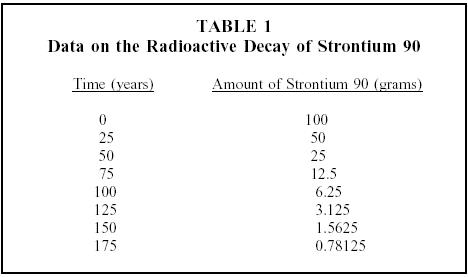
Abstract
To precisely understand the status of scattered strontium-90 (90Sr) after the 2011 accident at the Fukushima Daiichi Nuclear Power Plant (F1-NPP) of Tokyo Electric Power Company (TEPCO), the measurement of the soil samples collected both before and after the day of the accident from the same sampling locations is necessary. However, very few reports have investigated the background contaminant data before the accident even though several studies have been conducted to investigate the effects of the F1-NPP accident. To address the lack of the passed 90Sr information and reestablished baseline, this study focuses on the stored topsoil samples that are collected from the same sampling locations from the Fukushima Prefecture before and after the F1-NPP accident, which are analyzed for obtaining the 90Sr concentrations. The results of our investigation exhibited that the 90Sr concentrations in the Fukushima Prefecture soils ranged from 0.2 to 20.4 Bq/kg in the samples that were collected before the accident and from 1.37 to 80.8 Bq/kg in the samples that were collected after the accident from identical sampling locations. Further, the soil samples that were collected from 30 out of 56 locations displayed significant differences in terms of concentrations before and after the accident. In addition, the relations between the 90Sr concentrations and the soil properties of the samples (organic content, pH, water content, and composition) were investigated, and it was found that the organic content and water content had a positive correlation with 90Sr concentrations and, in contrast, the sandiness was shown to have a negative correlation with 90Sr concentrations. The depth characteristics were also investigated. The aforementioned results indicate that this tendency would be observed even in the future.
Introduction
A large amount of radioactive materials was scattered throughout the environment (ocean, atmosphere, land, and so on) because of the accident that occurred on March 11, 2011 at the Fukushima Daiichi Nuclear Power Plant (F1-NPP) that was owned by Tokyo Electric Power Company Holdings, Inc. (TEPCO).(1−3) Seven years have passed by since the accident, and research institutes around the world have been monitoring the influence of the environmental dynamics of radionuclides that have been released.(4−13) More specifically, there have been several environmental monitoring reports regarding β-ray-emitting nuclides, such as radioiodine and radiocesium, because multiple samples can be analyzed in a relatively short time using certain types of instruments such as a germanium semiconductor detector, a sodium iodide scintillator detector, and a lantern bromide scintillator detector.(14−19) Meanwhile, radiostrontium (90Sr) (half-life: 28.79 y(20)) is a pure β-ray-emitting nuclide that does not emit γ-rays, which makes it necessary to chemically isolate it for measuring β-rays because the β-ray spectra overlap. In particular, it is imperative to monitor 90Sr over a long period because it will require several decades to decommission F1-NPP. In Japan, instead of a few literature concerning the development of a rapid analytical means,(21−25) radiochemical analysis using milking-low background gas-flow counter (milking-LBC) is adopted as the official analysis method for analyzing 90Sr because of good sensitivity and/or high-precision analysis in low concentration levels in the environment.(26) This method requires considerable amount of time and effort to pretreat the analysis as compared to those required by the γ-ray measurement method. Although various studies have been vigorously conducted,(27−33) the study related to the scattering of 90Sr is not as advanced as compared to that related to the γ-ray-emitting nuclides such as radiocesium.
To precisely understand the status of scattered 90Sr after an incident of nuclear accident, the samples collected both before and after the day of the accident should be measured, thereby distinguishing from the fallout of atmospheric nuclear tests (20th century’s) that have been conducted in the past. So far, the survival ratios of nuclides with short half-lives in samples have been employed in several studies.(34) However, this technique cannot track the long-term process because it becomes difficult to evaluate the nuclides that exhibit a short decrease in half-lives. The optimal method for addressing these issues is to measure the radioactive concentrations of 90Sr in soil that is collected at identical locations before and after the accident. However, few examples exhibited the presence of 90Sr in soil before the F1-NPP accident, which was completely unexpected. Fortunately, we already possessed analytical data related to the 90Sr concentrations in soil samples that were collected before the accident with precise sampling locations throughout the Fukushima Prefecture (not published). Therefore, in this study, we succeeded in estimating the exact amount of 90Sr deposition before and after the F1-NPP accident. When performing the long-term observation, understanding the background level of 90Sr before the accident was observed to be considerably important for understanding the environmental radioactivity and the environmental dynamics or the usage of 90Sr as a tracer.
In this study, we measured the radioactivity concentrations of 90Sr in the topsoil at the same locations in the Fukushima Prefecture before and after the accident and obtained the background levels of 90Sr before the F1-NPP accident. Thus, we revealed the deposition status of 90Sr before and after the accident. We also investigated the correlation between the soil properties and 90Sr to determine the status of deposition of 90Sr on the topsoil in Fukushima prefecture (Figure 1).
Read more at:
Tohoku disaster reconstruction to miss ’20 deadline for completion

A resident in the Yuriage district of Natori, Miyagi Prefecture, returns to her home after shopping. The housing complex was built after the 2011 Great East Japan Earthquake and tsunami.
December 19, 2018
Reconstruction of areas devastated by the 2011 triple disaster will not be completed by fiscal 2020 as initially scheduled, and Fukushima Prefecture residents could be hit hardest by the delay, the Reconstruction Agency said.
Agency officials said Dec. 18 that further measures would be needed after fiscal 2020 to help areas affected by the triple meltdown at the Fukushima No. 1 nuclear power plant, as well as municipalities heavily damaged by the tsunami triggered by the Great East Japan Earthquake on March 11, 2011.
The government had set a 10-year reconstruction period as its basic policy, with the first five years described as an “intensive reconstruction period” and the second five years labeled as the “reconstruction and revitalization period.”
The Reconstruction Agency will also be eliminated at the end of March 2021, meaning the government will need new legislation to designate an agency that will handle the reconstruction effort in the Tohoku region from fiscal 2021.
Reconstruction Agency officials conducted studies in the five prefectures of Aomori, Iwate, Miyagi, Fukushima and Ibaraki during the current fiscal year to determine the extent of progress as well as what support measures should be continued beyond fiscal 2020.
The officials said some public works projects were taking longer than expected because of delays in buying land for those projects and revisions in reconstruction plans.
Although no specific project names or locations were revealed, the officials said all of those public works projects would not be completed by the end of fiscal 2020.
Under the government’s plan, the need for temporary prefabricated homes will no longer exist at the end of fiscal 2020.
However, elderly people who move out of such housing will still require care and supervision especially if they live alone and are suffering from psychological damage stemming from the natural disaster.
The situation looks especially dire in the locales most seriously affected by the nuclear accident.
Mountains of decontaminated soil will be moved outside of Fukushima Prefecture, but the relocation is not expected to happen for another 20 years. That means support measures for evacuees as well as Fukushima farmers and fishermen still dealing with negative publicity about their harvests will have to continue well beyond fiscal 2021.
A total of 32 trillion yen ($285 billion) has been set aside for the reconstruction effort. Whatever is left can be carried over after fiscal 2021 for still-incomplete projects.
At the end of fiscal 2017, 4.6 trillion yen had still not been spent. Reconstruction Agency officials did not say if additional budgetary measures would be needed.
Nuclear Fox Revealed! France’s Hervé Courtois of Nuclear-News, Rainbow Warriors – NH #391
 Nuclear Fox Hervé Courtois & Nuclear Hotseat’s Libbe HaLevy @ the Window Rock of Window Rock AZ
Nuclear Fox Hervé Courtois & Nuclear Hotseat’s Libbe HaLevy @ the Window Rock of Window Rock AZ
Podcast: Download
This Week’s Featured Interview:
- Nuclear Fox – Hervé Courtois of France, aka D’un Renard, or “The Fox” – has been a steadfast provider of reliable nuclear news, especially from Fukushima, since the first months after the disaster began in 2011. After many years of trying, at the International Uranium Film Festival, Libbe HaLevy succeeded in cornering him for an interview on why he became so involved with providing nuclear news, and what keeps him going. Here are his links:
Numnutz of the Week (for Outstanding Nuclear Boneheadedness):
Nuclear disaster? Radiation? Contamination of Japanese food? Fukushima sake in Manhattan? I’ll drink to that! (… or NOT…)
Activist Links:
- Public Comment needed on Department of Energy’s proposal to abandon high-level radioactive wastes in situ – meaning right where it is now, on site at reactors and on already contaminated lands.
- Suggested wording for comments from Beyond Nuclear, CLICK HERE.
- DOE’s proposal, CLICK HERE.
- LA Times article on Marco Kaltofen: “Hidden Danger: Radioactive Dust is Found in Communities Around Nuclear Weapons”
- For the dust testing protocols after the Woolsey Fire, CLICK HERE.
Key facts to remember:- Protect yourself from the dust and dirt with a mask and clothing that can be easily washed or even thrown away.
- Do NOT simply send in to Fairewinds; you MUST get approval and registration with them or your sample will be disposed of without being opened.
- The results will take at least 5 months, if not longer, to show up. This is because of the intensity of the testing program and the number of steps that must be taken. BE PATIENT. When you get the data, it will be solid and scientific.
Top court orders TEPCO to pay compensation for voluntary evacuation from Fukushima

The Supreme Court building is seen in Tokyo.
December 18, 2018
TOKYO — The Supreme Court on Dec. 13 upheld the lower court ruling ordering Tokyo Electric Power Co. (TEPCO) to pay about 16 million yen in compensation to a man in his 40s and his family that voluntarily evacuated Fukushima Prefecture to western Japan after the 2011 nuclear disaster.
The top court’s First Petty Bench confirmed an Osaka High Court ruling handed down in October 2017 that recognized the man had developed depression due to the disaster and became unable to work. It marked the first time that a ruling awarding compensation to voluntary evacuees from the Fukushima Daiichi Nuclear Power Station disaster has been finalized by the top court, according to a legal team for victims of the nuclear crisis.
Meanwhile, the First Petty Bench led by Justice Katsuyuki Kizawa avoided mentioning the rationality of voluntary evacuation and other points in question as it turned down appeals from both sides against the high court ruling due to “insufficient grounds.”
According to the lower court rulings, the man from Japan’s northeastern Fukushima Prefecture city of Koriyama owned multiple restaurants and voluntarily evacuated with his family to locations outside the prefecture shortly after the outbreak of the nuclear crisis. The owner suffered from insomnia and was diagnosed with depression in September 2011, after relocating to the western Japan city of Kyoto.
TEPCO had already paid around 2.9 million yen to the family of five based on the government’s compensation standards. However, the man and his family deemed the amount inadequate and filed a lawsuit demanding about 180 million yen from TEPCO.
In its ruling handed down in February 2016, the Kyoto District Court ordered the utility pay about 30 million yen to the family after recognizing the causal relationship between the nuclear disaster and the man’s depression. The amount included compensation for the man and his wife’s mental suffering and damage caused by the man’s taking a leave of absence from work.
However, it upheld the government’s evacuation order standards. District court judges determined that voluntary evacuation would be rational only until August 2012 because “it’s difficult to recognize health damage from exposure to radiation below 20 millisieverts per year.”
After both parties appealed the district court ruling, the Osaka High Court basically agreed with the decision but ruled that the man only needed treatment for depression for two years due to the disaster, instead of four and a half years. Consequently, the high court had considerably reduced the compensation money awarded to the man due to his absence from work.
High iodine distribution, low intake among children after Fukushima nuclear accident

December 17, 2018
Despite a high distribution rate of stable iodine after the 2011 Fukushima nuclear accident in Japan, only 63.5% of parents reported children took the tablets, with many citing safety concerns in questionnaires, according to findings published in The Journal of Clinical Endocrinology & Metabolism.
The intake of stable iodine after a nuclear emergency is a key strategy for preventing childhood thyroid cancer, along with evacuation and other measures, Yoshitaka Nishikawa, MD, a physician and medical researcher in the department of internal medicine at Hirata Central Hospital in Fukushima, Japan, and colleagues wrote in the study background. The timing of iodine administration is optimally between 24 hours before and up to 2 hours after the expected onset of exposure, they noted; however, iodine is still reasonably effective when taken up to 8 hours later. To date, there is limited information about the acceptability and feasibility of implementation of iodine distribution in actual cases, they wrote.
“To prepare for future nuclear emergencies, investigations of the operational issues in an actual case are needed,” the researchers wrote.
In a retrospective, observational study, Nishikawa and colleagues analyzed data from 961 children from Miharu, a town in Fukushima prefecture, who underwent biennial thyroid screenings at Hirata Central Hospital between August and November 2017 (median age at time of accident, 5 years). In addition to the Fukushima Health Management Survey, Miharu has continued thyroid screenings for all primary and secondary school students.
In Miharu, health care professionals distributed stable iodine to 3,134 households (94.9% distribution rate) after explosions at the Fukushima nuclear plant caused by the 2011 earthquake in eastern Japan, along with instructions provided by the local government. Screening and questionnaire records included age of participants at the time of the nuclear accident, sex, region of residence before the accident, whether the participant was evacuated, whether the child and parents took stable iodine orally after the accident and dietary habits, including iodine intake. Researchers used logistic regression models to identify factors associated with stable iodine intake.
Within the cohort, 610 children (63.5%) had taken stable iodine, according to questionnaire data.
Researchers found that children were more likely to take stable iodine provided after the accident if their parents took stable iodine (OR = 61; 95% CI, 37.9-102.9). Compared with preschool and school-aged children, infants (aged 2 years or younger) were less likely to take stable iodine (OR = 0.21; 95% CI, 0.11-0.36).
In assessing questionnaire data from parents who reported children did not take stable iodine (n = 351), concern about safety was the most frequent reason provided (n = 164; 46.2%), followed by evacuation to other areas, no national or prefectural instruction and iodine not being delivered.
“Qualitative analysis revealed that concern about safety was the major reason for avoiding intake,” the researchers wrote. “Other issues related to distribution methods, information about the effects and adverse events and instruction about intake. In future nuclear disasters, it would be important to explain to both children and parents the effects and adverse effects of iodine intake and to provide detailed instructions about the intake of iodine by infants.” – by Regina Schaffer
Radiation-soaked Fukushima town REOPENS to visitors 7 years after meltdown

December 16, 2018
The town next to the Fukushima Nuclear Power Planet that suffered a devastating meltdown in 2011 has reopened.
Futaba – on the Fukushima Prefecture – was turned into a ghost town after a huge tsunami swamped the nuclear reactors, triggering a massive radiation leak.
But authorities are now planning on reopening the town – despite warnings of worryingly high levels of radiation.
Shortly after the meltdown, all of Futaba was closed off after critical levels above 50 millisieverts of radiation were recorded.
Those hoping to travel there will need to apply for permission to enter before they will be allowed past a checkpoint
It is thought the town could be rebuilt and ready for evacuees to move back in by 2022 provided it reaches government-set safe levels of contamination by the end of the year.
Officials want radiation levels to be below 1 millisievert for people to live there again.
Photographs taken in the last few years of the areas surrounding Fukushima show something out of a post-apocalyptic war zone.
Last year, shocking images emerged of radioactive boars roaming around several towns in the evacuation zone.
Tepco-linked firm employee’s thyroid cancer caused by work after Fukushima nuclear plant meltdown, labor ministry admits

Officials work last month in the main control room of the crippled No. 3 and 4 reactors at the Fukushima No. 1 nuclear power plant operated by Tepco.
December 13, 2018
The labor ministry said Wednesday that the thyroid cancer of a male worker, exposed to radiation after the triple meltdown at the Fukushima No. 1 plant, has been recognized as a work-related disease.
Following the decision by a labor ministry panel of experts, the labor standards inspection office of Hitachi, Ibaraki Prefecture, reached the conclusion on Monday.
The man in his 50s became the sixth person to be granted a workers’ accident compensation insurance payment over cancer caused by the March 2011 nuclear disaster at the plant operated by Tokyo Electric Power Co. Holdings Inc. He is the second person to be compensated due to thyroid cancer.
According to the ministry, the man, an employee of a Tepco-related company, was taking part in post-accident emergency work at the Fukushima plant that included a power recovery operation. He had worked at several nuclear plants for some 11 years since November 1993.
Of his cumulative radiation dose of about 108 millisieverts, he received 100 millisieverts after the meltdown.
The man applied for the insurance payment in August 2017, two months after he was diagnosed with cancer.
A total of 16 workers have requested such payments due to cancer they say was caused by the nuclear accident. Five have had their requests turned down while another five cases are still pending.
Town that hosts disaster-hit Fukushima nuclear plant aims to allow daytime access to special zone in 2020

Futaba in Fukushima Prefecture, where restrictions may be lifted to allow daytime access in 2020, is seen in November
December 13, 2018
FUKUSHIMA – One of the municipalities that hosts the crisis-hit Fukushima No. 1 nuclear plant is considering lifting restrictions on daytime access in spring 2020 to an area being rebuilt in the town center, sources close to the matter said Thursday.
The town of Futaba, Fukushima Prefecture, where units Nos. 5 and 6 of the complex are located, became a ghost town after the 2011 disaster due to high levels of radiation. Those wishing to visit need to apply in advance for permission to enter and must pass through a checkpoint.
But such restrictions would be lifted during the daytime for access to a special zone several kilometers from the Fukushima plant on the Pacific coast, where government-funded decontamination and reconstruction work is underway, with the aim of evacuees returning in the spring of 2022.
To lift the restrictions, the town will have to meet government criteria to be unveiled by the end of the year. If realized, the move will pave the way for the town to be rebuilt.
After the massive earthquake and tsunami triggered the world’s worst nuclear catastrophe since the 1986 Chernobyl disaster, the whole of Futaba was designated a no-go zone for residents, with radiation levels exceeding 50 millisieverts per year.
The town’s plan to mark the special zone as a reconstruction hub was endorsed by the central government in September last year. The town said at the time that in most of the area radiation levels had fallen below 20 mSv per year, with figures around Futaba Station brought down below 5 mSv per year.
Decontamination work has been conducted to make sure radiation levels will be below 20 mSv per year throughout the special zone by the spring of 2020. The government eventually aims to lower the levels below 1 mSv per year.
The International Commission on Radiological Protection sets radiation exposure under normal situations at 1 mSv per year and says 100 mSv of exposure over a lifetime would increase the possibility of developing cancer by up to 1 percent.
Under emergency situations, the ICRP sets a limit of 20-100 mSv of annual radiation exposure.
In the special zone, which will occupy about 560 hectares, or 10 percent of the town, residential areas and commercial facilities will be built. Futaba envisions some 2,000 residents will eventually live in the area.
With more residents and construction workers expected to come to the area, the town is likely to discuss measures with the central government to beef up surveillance through the use of security cameras or patrols.
Five other municipalities near the Fukushima No. 1 plant aim to build similar reconstruction hubs for the return of their own evacuees.
All six municipalities are planning to have evacuation orders lifted in the hub zones by the spring of 2023 but Futaba is the first to announce plans for free access during daytime.
The Fukushima No. 1 plant spewed a massive amount of radioactive materials after a magnitude 9.0 earthquake triggered tsunami that flooded the facility on March 11, 2011.
Reactor Nos. 1 to 3 suffered fuel meltdowns, while hydrogen explosions damaged the buildings housing units Nos. 1, 3 and 4. Reactor Nos. 5 and 6 achieved a cold shutdown after several days.
The disaster left more than 18,000 people dead or missing. As of November, more than 54,000 people were still unable to return to their homes.
Support the “Mothers’ Radiation Lab Fukushima” with your donations
On 11th November 2011, the Great East Japan Earthquake occurred. This earthquake, along with the following tsunami, caused TEPCO’s Fukushima Daiichi Powerplant nuclear disaster.
After the explosion at the Power Plant, radioactive particles were released and spread everywhere, including the area where we were living.
In order to protect the children from radiation exposure, we started measuring radioactivity in November 2011.
We measure radioactivity that is “impossible to see, smell and feel.” Making the danger visible allows us to better protect the children from radiation exposure.
Through our various activities, we wish to continue working with people who support us in our mission to protect the health and future of the children.
Activities of “Mothers’ Radiation Lab Fukushima”
1. Radioactivity measurementFood, water, soil, building material
Nuclide measurement: Caesium 134, 137 · Strontium 90 · Tritium
Nuclide measurement: Caesium 134, 137 · Strontium 90 · Tritium
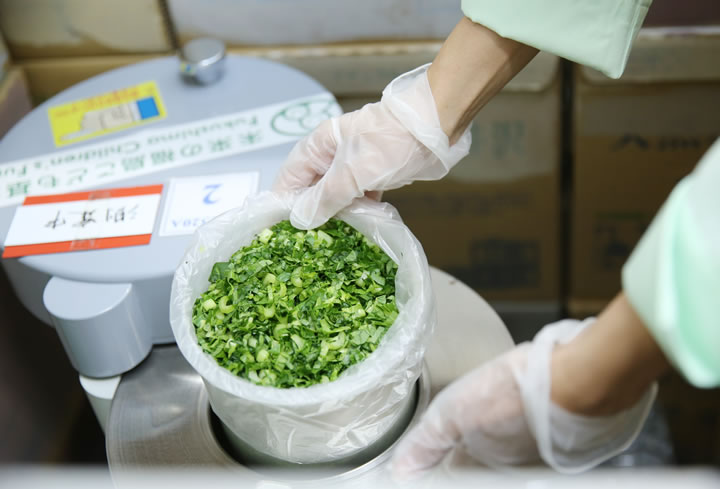
2. Human body radioactivity measurementNuclide measurement: Caesium 134, 137
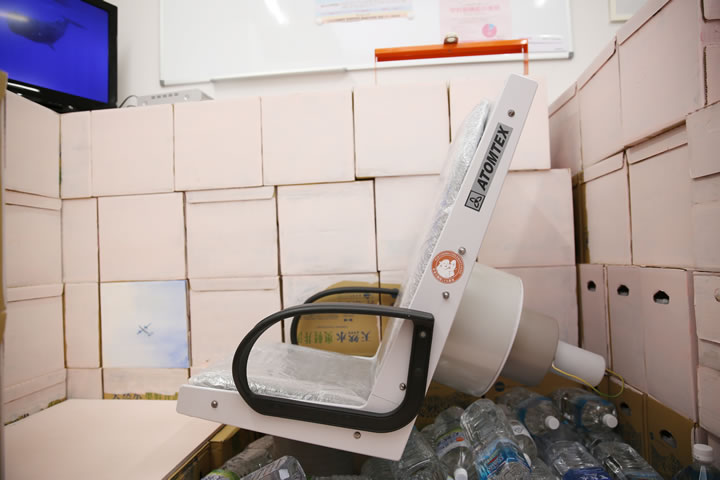
3. Oceanographic research projectImplementation of fixed point sampling and radiation measurements at 1.5 km off the TEPCO Fukushima Daiichi Nuclear Power Station coast
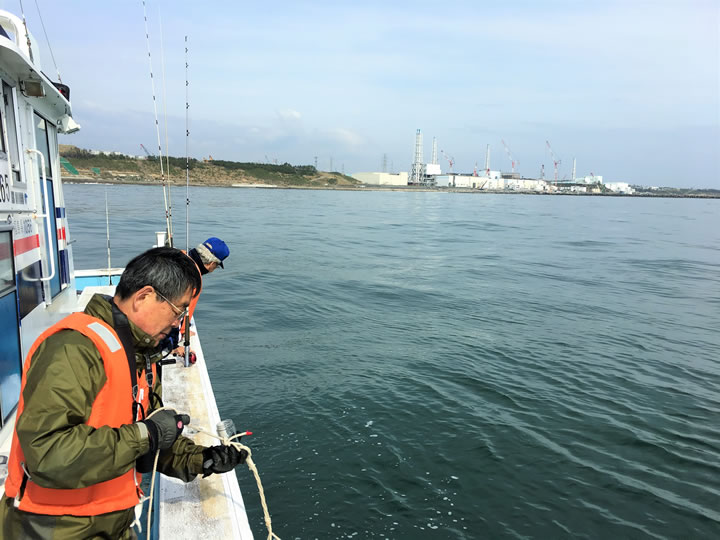
4. Tarachine ClinicPediatrics and Medicine

5. Thyroid Screening ProjectImplementation throughout the Fukushima Prefecture
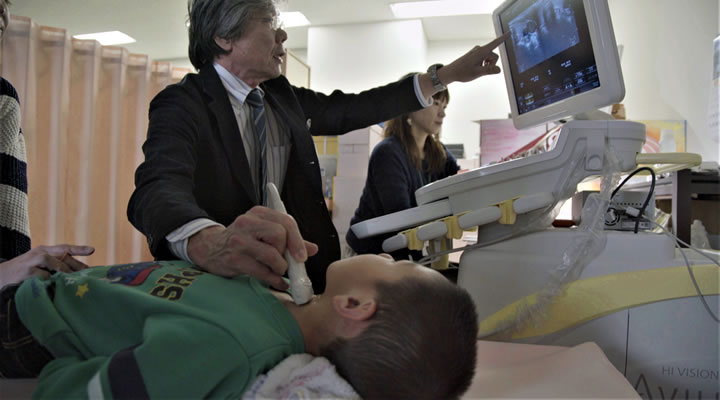
6. Children’s nature experience camping supportAdministrative support of activities to make the children of Fukushima experience the joys of nature
Cooperating associations: Okinawa – Kumi no Sato, others
Cooperating associations: Okinawa – Kumi no Sato, others

7. Children’s wellbeingImplementation of relaxation massages and the “Power of play” project in the “Sir Pirika” therapy room

8. Hosting of lectures given by expertsInviting professional lecturers to hold events to deepen their learning together with local people
9. Activities in cooperation with volunteers of the Fukushima regionSupport of the volunteering activities of the mothers
Cooperating associations: Team “Team Mama Beku: group protecting the children’s environment”
Cooperating associations: Team “Team Mama Beku: group protecting the children’s environment”
Mothers’ Radiation Lab Fukushima is maintained by donations.
We are grateful for your support.
*Any amount will be deeply appreciated.
Bank Account & Paypal at:
Korean distributors halt sales of instant noodles from Fukushima due to unnerved customers

Korean distributors halt sales of instant noodles from Fukushima
Dec 5, 2018
Korean retailers Homeplus and Wemakeprice have discontinued sales of Fukushima-imported instant noodles after the product’s place of origin label stirred up health concerns.
Otaru Shio Ramen — produced in Fukushima, Japan, and imported to Korea by Homeplus and Wemakeprice — has Fukushima printed as the area of production in Japanese. However, the Korean label specifies only Japan as the place of origin, prompting some consumers to point out that the translated label is misleading and takes away freedom of choice for those who do not know Japanese.
Some Koreans have reservations about products imported from Fukushima following a nuclear meltdown during the 2011 Tohoku earthquake.
Homeplus, which sold the product through its offline stores, said, “Otaru Shio Ramen is produced in Kitakata city factory, located over 100 kilometers from the area of the nuclear disaster. The product has no problems, as it has gone thorough radiation inspection.”
The company said the instant noodles do not cause health problems, but discontinued sales in response to concerns.
Wemakeprice, which sold Otaru Shio Ramen through its online channels, deleted the item from its website as of Tuesday night. It had sold just 10 packets before deleting the item.
The company said, “The product went through a radiation inspection before being imported, and no health-related problems were found. However, we decided to discontinue the product in response to consumers’ demands.”
Instant noodles imported from Fukushima unnerve consumers
December 6, 2018
WeMakePrice and Homeplus were found to have sold instant noodles produced in Japan’s Fukushima Prefecture, raising food safety concerns among consumers.
Fukushima is the northeastern part of Japan’s Honshu Island, contaminated by radioactivity following the explosions of reactors at the Fukushima Daiichi Nuclear Power Plant in 2011.
According to industry officials Wednesday, the two retailers had sold the made-in-Fukushima “Otaru Shio Ramen” until early this week.
But they decided to take the instant noodles off shelves as consumers discovered product information written in Japanese shows the manufacturer is located in Fukushima.
The product information written in Korean only says it was made in Japan.
After the revelation, angry consumers claimed the retailers tried to deceive those who cannot read Japanese.
“I hurriedly canceled my purchase before its delivery. I might have been a guinea pig,” said a consumer, who had bought the instant noodles from WeMakePrice.
The companies emphasized the safety of the product, but said they decided to stop selling it to reassure their customers.
“The instant noodles were produced at a factory in a Fukushima city of Kitakata, which is located over 100 kilometers from the contaminated region,” a Homeplus official said. “The product also underwent a radioactivity check before its import, and it was found to be safe.”
The discount chain also refuted criticisms that the retailers tried to deceive consumers.
“According to the Ministry of Food and Drug Safety’s guidelines, the product information does not need to include the specific place of origin. It just needs to include the country of origin,” the official said.
The government has banned the import of agricultural and marine products from Fukushima, but it still allows the import of processed foods from the prefecture, if their importers get certification.
Moreover, Korea may be brought to the World Trade Organization (WTO) if it prohibits the import of made-in-Fukushima foods without any scientific reason.
Japan is seeking to file a complaint with the WTO against Taiwan which held a referendum recently and decided to ban the import of agricultural products from Fukushima.
Korean consumers, however, demand the right to know the specific place of origin at least, if the government cannot ban the overall import of products from Fukushima.
Amid the growing concerns, they have begun filing online petitions on the Cheong Wa Dae website to urge the government to demand retailers specify the exact place of origin of food products.
-
Archives
- April 2024 (343)
- March 2024 (335)
- February 2024 (345)
- January 2024 (375)
- December 2023 (333)
- November 2023 (342)
- October 2023 (366)
- September 2023 (353)
- August 2023 (356)
- July 2023 (363)
- June 2023 (324)
- May 2023 (344)
-
Categories
- 1
- 1 NUCLEAR ISSUES
- business and costs
- climate change
- culture and arts
- ENERGY
- environment
- health
- history
- indigenous issues
- Legal
- marketing of nuclear
- media
- opposition to nuclear
- PERSONAL STORIES
- politics
- politics international
- Religion and ethics
- safety
- secrets,lies and civil liberties
- spinbuster
- technology
- Uranium
- wastes
- weapons and war
- Women
- 2 WORLD
- ACTION
- AFRICA
- Atrocities
- AUSTRALIA
- Christina's notes
- Christina's themes
- culture and arts
- Fuk 2022
- Fuk 2023
- Fukushima 2017
- Fukushima 2018
- fukushima 2019
- Fukushima 2020
- Fukushima 2021
- general
- global warming
- Humour (God we need it)
- Nuclear
- RARE EARTHS
- Reference
- resources – print
- Resources -audiovicual
- World
- World Nuclear
- YouTube
-
RSS
Entries RSS
Comments RSS


